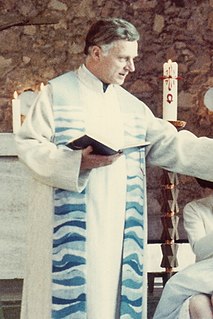Related Research Articles

Die Sendung mit der Maus, often simply Die Maus, is a German children's television series, popular nation-wide for its educational content. The show first aired on 7 March 1971. Originally called Lach- und Sachgeschichten für Fernsehanfänger, it was controversial because German law prohibited television for children under six years of age. The program was initially condemned by teachers and childcare professionals as bad for children's development, but is now hailed for its ability to convey information to children, having received over 75 awards. On 7 March 1999 the program's Internet site was launched and received 2,400 e-mails and 4 million hits on the first day.

Grimms' Fairy Tales, originally known as the Children's and Household Tales, is a German collection of fairy tales by the Grimm brothers or "Brothers Grimm", Jacob and Wilhelm, first published on 20 December 1812. This first edition contained 86 stories, and by the seventh edition in 1857, it had 210 unique fairy tales. It is listed by UNESCO in its Memory of the World Registry.
Ulf Schirmer is a German conductor and opera house administrator.

The Augsburger Puppenkiste is a marionette theater in Augsburg, Germany.
Bayerischer Fernsehpreis is an award presented by the government of Bavaria, Germany since 1989. The prize symbol is the "Blue Panther", a figure from the Nymphenburg Porcelain Manufactory. The prize money is €10,000.

Barbara Rütting was a German film actress, politician, and author. She appeared in 50 films between 1952 and 1979.
Die Ludolfs – 4 Brüder auf’m Schrottplatz is a documentary-styled reality TV series produced by Preview Production GBR and shown on DMAX in Germany. The show is about the four brothers, Uwe, Horst-Günter, Peter and Manfred "Manni" Ludolf.

Andrea Sawatzki is a German actress. From 2002 to 2010 she starred in the Hessischer Rundfunk version of the popular television crime series Tatort as police inspector Charlotte Sänger.

Iris Renate Dorothea Berben is a German actress and voice actress.

Axel Stein is a German actor and comedian.
The Axel-Springer-Preis is an annually awarded prize. The Award is given to young journalists in the categories print, TV, radio, and online journalism due to the decisions of the Axel-Springer-Akademie.
Leonardo Nigro is a Swiss actor.

Lothar Zenetti was a German Catholic theologian, priest, and author of books and poetry. In Frankfurt, he was both a minister for young people and a parish priest. He was also active on radio and television. His songs, for example the popular "Das Weizenkorn muss sterben" and "Segne dieses Kind", appear in both Protestant and Catholic hymnals.

An allem ist Hütchen schuld!, Op. 11, is an opera in German in three acts composed by Siegfried Wagner in 1914/15 to his own libretto. It is described as a Märchenspiel or fairy-tale play. It premiered on 6 December 1917 at the Ccourt Theatre Stuttgart.

Pia Klemp is a German biologist and human rights activist, who, between 2011 and 2017, worked for the Sea Shepherd organization to participate in many international operations to protect sea animals.
Nicole Kortlüke is a German film editor.

And Tomorrow the Entire World is a 2020 German-French political drama film directed by Julia von Heinz. It premiered in competition at the 77th Venice International Film Festival. It was selected as the German entry for the Best International Feature Film at the 93rd Academy Awards, but it was not nominated. The title of the film is taken from the line "Today Germany belongs to us, and tomorrow the whole world" from the National Socialist propaganda song "The Rotten Bones Tremble".

Helmar Rudolf Willi Weitzel is a German television presenter, journalist and film producer. He moderated the television programs Willi wills wissen and Willis VIPs. In 2008 he made the movie Willi und die Wunder dieser Welt. Other TV shows he hosted were Willis Quiz Quark Club, Willi wills wissen – Gute Frage, nächste Frage!, Willi wills wissen von A–Z and Ein guter Grund zu feiern. Since 2013 he has been on the road in Germany with his live program Willis wilde Wege. Since January 2018 he has moderated the magazine Gut zu Wissen on BR Fernsehen.

Willi wills wissen was a children's program focused on factual issues and everyday occurrences, produced by Megaherz Film und Fernsehen on behalf of the Bayerischer Rundfunk with the Institut für Film und Bild in Wissenschaft und Unterricht. The program was first broadcast on KiKA from 2002 to 2010, and was regularly repeated on Das Erste and some regional channels of the ARD. The producers were Franz Xaver Gernstl and Fidelis Mager.
References
- ↑ Dieter Schäfer: Die Entwicklung der Gameshow im Kinderfernsehen des Bayrischen Rundfunks. Diplomica, 1997, ISBN 978-3-8324-0167-2.
- ↑ Stötzel, Dirk Ulf.: Das Magazin "Die Sendung mit der Maus" : Analyse einer Redaktions- und Sendungskonzeption. O. Harrassowitz, Wiesbaden 1990, ISBN 978-3-447-02991-9.
- ↑ Elke Schlote: Bildungsfernsehen historisch (1,3 MB). Internationales Zentralinstitut für das Jugend- und Bildungsfernsehen (IZI), München, retrieved 1 September 2017 (dt). http://www.br-online.de/jugend/izi/deutsch/publikation/televizion/28_2015-2/Schlote-Bildungsfernsehen_historisch.pdf
- ↑ DVD-Übersicht auf digitalvd.de, retrieved 2 December 2013. http://www.digitalvd.de/dvds/72747,Das-feuerrote-Spielmobil---Felix-und-Bruder-Tom.html Archived 2012-05-21 at the Wayback Machine
- ↑ TV-Kultbus in Namibia gefunden auf welt.de, retrieved 2 December 2013. https://www.welt.de/welt_print/article3203784/Rueckkehr-des-feuerroten-Spielmobils.html